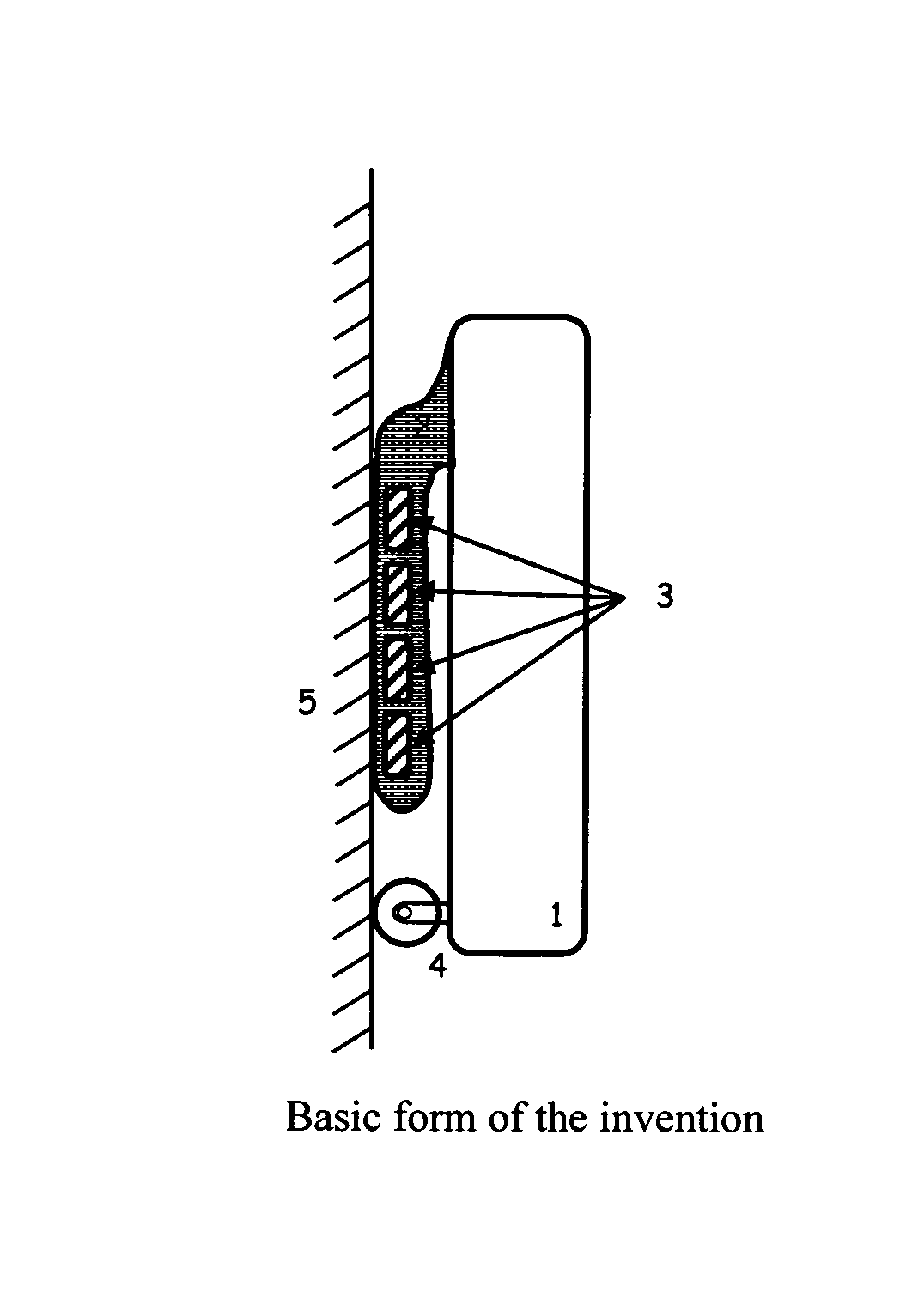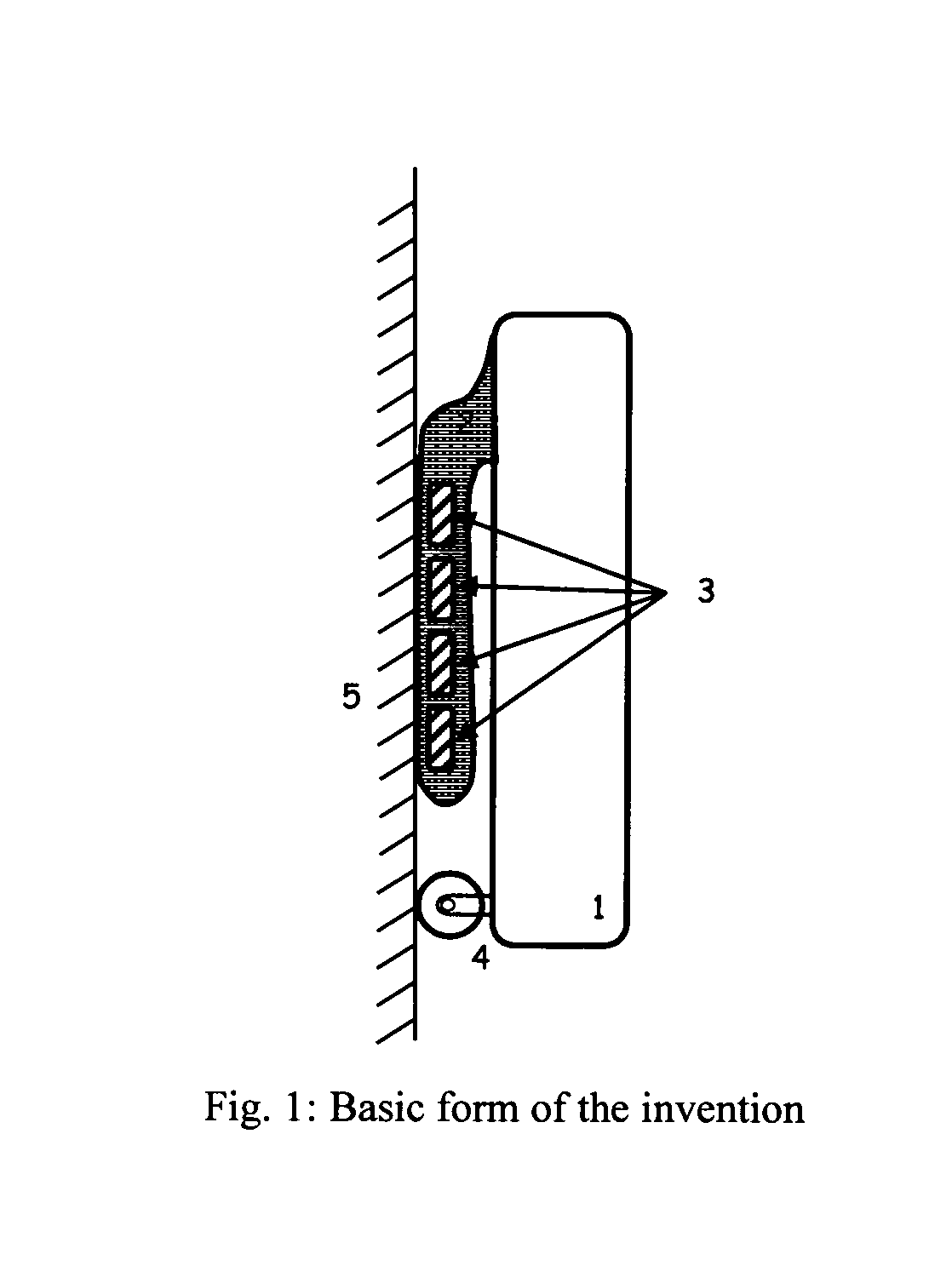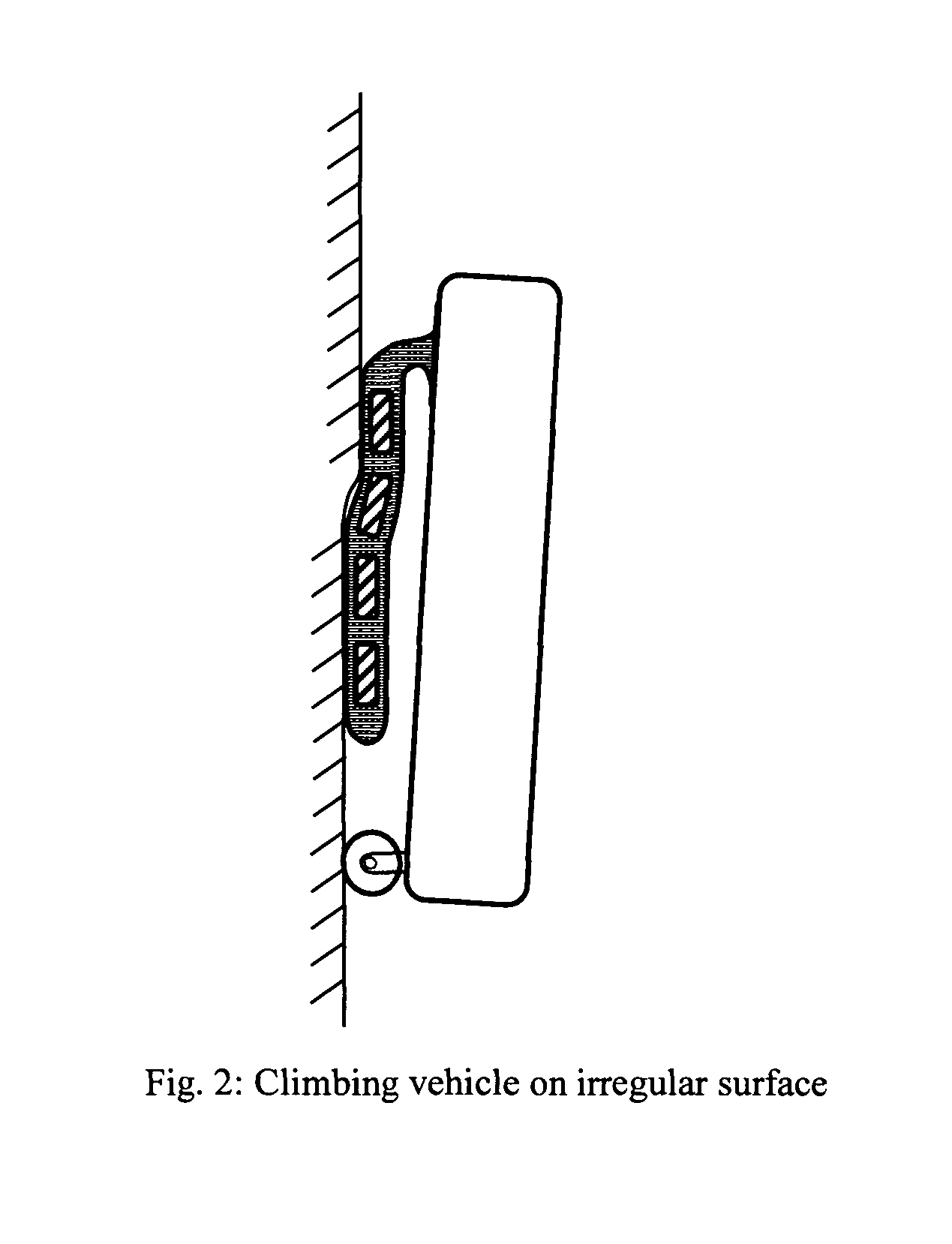Climbing vehicle with suspension mechanism
a technology of suspension mechanism and climbing vehicle, which is applied in the direction of endless track vehicles, vehicles, transportation and packaging, etc., can solve the problems of increasing kinematic requirements for steering, increasing complexity of system, and reducing efficiency
- Summary
- Abstract
- Description
- Claims
- Application Information
AI Technical Summary
Benefits of technology
Problems solved by technology
Method used
Image
Examples
Embodiment Construction
[0045]The invention disclosed here describes a climbing vehicle, robot or platform that is able to climb ferrous surfaces while accommodating variations in the geometry of the climbing surface and effectively transferring forces between the adhering members and the vehicle chassis. In a basic form, the invention consists of a chassis (1), resilient runner (2), adhering members (3) and a propulsion element (4) as shown in FIG. 1. The climbing vehicle is operating on a climbing surface (5) that may contain variations in geometry. The chassis forms the body of the vehicle and can be used to mount payloads, tools or other components. The resilient runner is attached to the chassis and makes sliding contact with the climbing surface. The resilient runner can deform to generally adapt or conform to the climbing surface (FIG. 2). The adhering members are attached to the resilient runner, for example through a bolted connection, a glued connection, fit into a molded shape in the resilient r...
PUM
 Login to View More
Login to View More Abstract
Description
Claims
Application Information
 Login to View More
Login to View More - R&D
- Intellectual Property
- Life Sciences
- Materials
- Tech Scout
- Unparalleled Data Quality
- Higher Quality Content
- 60% Fewer Hallucinations
Browse by: Latest US Patents, China's latest patents, Technical Efficacy Thesaurus, Application Domain, Technology Topic, Popular Technical Reports.
© 2025 PatSnap. All rights reserved.Legal|Privacy policy|Modern Slavery Act Transparency Statement|Sitemap|About US| Contact US: help@patsnap.com



